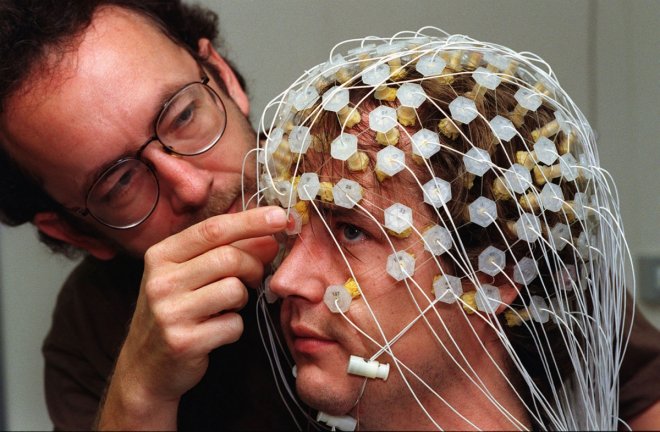
Scientists at Boston University have recently found that electrical stimulations can alter the functioning of the human brain and change people's behavior.
Reinhart, a researcher and assistant professor of psychological brain sciences at Boston University said the medical frontal cortex at the front part of the brain has the ability to raise "alarm bell of the brain." He said, "If you make an error, this brain area fires. If I tell you that you make an error, it also fires. If something surprises you, it fires."
He said that the medical frontal cortex, where the brain impulses are formed, functions simultaneously with the nearby lateral prefrontal complex in healthy persons. These two fundamental brain regions regulate the major brain functions like memory, skills and self-control of behavior.
The researcher used a new technique called high definition trans-cranial altering current stimulation (HD-tACS) to stimulate the two regions of the brain using electrodes which are placed on the scalp of the volunteers. He found that the regions improved their mutual communications when it was stimulated by using HD-tACS . This enabled the participants to learn fast and to have better self-control. Meanwhile, disrupting the brain signals resulted in the weakening of ability to learn and control behavior. This patterns could be changed by altering the electric impulses given through the electrodes.
The Journal Proceedings of the National Academy of Sciences (PNAS) where the study was published, suggests that these findings could be a good tool for enhancing brain functions and could help in the treatment of a wide range of brain disorders.
David Somers, a BU professor of Psychological and brain sciences who was not involved with the study stated, "We're always looking for a link between brain activity and behavior. It's not enough to have just one of those things. That's part of what makes these findings so exciting." He also termed the stimulation as a "turbo charge" for the brain.
The communication between the medical frontal cortex and lateral prefrontal cortex took place at certain intervals of time and these brain rhythms were about four to eight cycles for a second, observed the researchers. Reinhart's experiment has helped in use of a scientific instrument to alter the cycles to find its involvement in learning and decision-making skills. It could also record people's electrical brain activity using electroencephalogram (EEG).
Reinhart experimented the instrument on 90 volunteers by changing the patterns of electric signals sent to them through a soft cap of electrodes that changed the stimulus. The feedback recorded while the volunteers did their time-estimated learning tasks showed that their range of learning and behavior was different when the researcher adjusted the stimulations.
The scientist said that the new technique would be useful in the treatment of wide range of brain disorders like anxiety, Parkinson's disease, autism, schizophrenia, ACHD and Alzheimer's. Many of the drugs that are used today target the entire brain than the specific locations. The new method would be useful to make a better cure, they said.
Reinhart, however, warned against the building and using of such instruments irrationally. He said, "You can hurt yourself. You can get burned and have current ringing around your head for days."









